Rat Model for Necrotizing Enterocolitis (NEC)
- Product No.DSI730Ra01
- Organism SpeciesRattus norvegicus (Rat) Same name, Different species.
- Prototype SpeciesHuman
- SourceInduced by artificial feeding and induction of hypoxia and cold stimulation
- Model Animal StrainsNeonatal SD rats(SPF), 2 days old
- Modeling Grouping1.Randomly divided into six group: Control group, Model group, Positive drug group and Te
- Modeling Period1~2 weeks
- Modeling MethodNewborn rats were breastfed within 48 hours after birth, fed freely, and were caged with their mothers. 48h after birth, they were randomly divided into model group and control group. In the control group, newborn rats were kept in the same cage with their mothers 48h after birth and fed with rat milk without hypoxia cold stimulation. Neonatal rats in the model group were separated from their mothers 48 hours after birth, placed in incubators and artificially fed with rat milk substitute, and periodically given hypoxia cold stimulation to establish neonatal necrotizing enterocolitis animal model.
NEC Model Group:
1.Newborn rats were separated from their mothers, placed in incubators (temperature 28-30 ℃, humidity 45%-65%), and fed with rat milk substitutes,using No. 5 intravenous indwelling needle to feed regularly through oral intubation.The first feeding amount was 0.2 ml/ times, every 24 hours increased by 0.2ml/ times, after 48 hours gradually increased to the amount of 0.4 ml/ times.
2. After feeding 2 times a day, the newborn SD rats were placed in the self-made hypoxia cabin, zero oxygen measuring instrument, input the neonatal rat to the nitrogen (15 L/min flow) for 90 s, and then a self-made 4 degrees cold box for 10 min continuous cold stimulation.
3. NEC model of neonatal SD rats was established for 3 days continuously. The rats were sacrificed at 12 h after the last feeding. - ApplicationsDisease Model
- Downloadn/a
- UOM Each case
- FOB
US$ 300
For more details, please contact local distributors!
Model Evaluation
1. Appearance and growth
After initial modeling, neonatal rats in model group showed repeated failure in their response to yellow-green mucus laxity, wasting and weight loss, followed by gastric retention, abdominal distention, diarrhea, decreased milk intake, lethargy, decreased activity, lethargy and slow action, and gradually increased. The newborn rats in the control group were normal in eating and defecating, without abdominal distension and gastric retention, with good activity and full subcutaneous fat.
2. Small intestine macroscopic changes were photographed;
3. Daily body weight and food intake of each mouse were recorded.
4. Specimens were prepared with white plates, fixed with electron microscopy, western blot and PCR for subsequent detection by users.
Pathological Results
Intestinal histopathological examination
The proximal intestinal tube of the blind was taken 1cm and fixed in fixative solution, paraffin embedded, coronal section was taken, HE staining was performed to observe the intestinal histopathological changes under light microscope.
Pathological sections of ileocecal ileum of newborn rats were stained with HE staining and pathological observation under light microscope showed that the ileum structure of control group was intact, the intestinal mucosa was intact, the epithelium was intact and continuous, the glands were arranged regularly, the tissue structure was clear, the secretion function was active, the blood vessels of lamina propria were not dilated, the muscle layer was not abnormal, and there was no inflammatory cell infiltration or ulcer. In model group, villi abscission, necrosis, villi structure disappearance, and even intestinal perforation were observed. There are numerous lymphocytes, macrophages and neutrophils infiltrating the lamina propria.
Cytokines Level
Statistical Analysis
SPSS software is used for statistical analysis, measurement data to mean ± standard deviation (x ±s), using t test and single factor analysis of variance for group comparison, P<0.05 indicates there was a significant difference, P<0.01 indicates there are very significant differences.
GIVEAWAYS
INCREMENT SERVICES
-
 Tissue/Sections Customized Service
Tissue/Sections Customized Service
-
 Serums Customized Service
Serums Customized Service
-
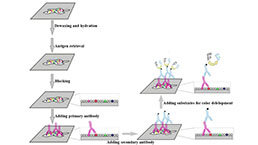 Immunohistochemistry (IHC) Experiment Service
Immunohistochemistry (IHC) Experiment Service
-
 Small Animal In Vivo Imaging Experiment Service
Small Animal In Vivo Imaging Experiment Service
-
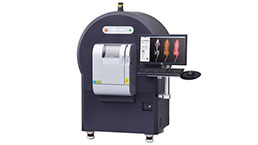 Small Animal Micro CT Imaging Experiment Service
Small Animal Micro CT Imaging Experiment Service
-
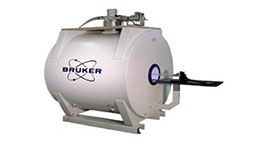 Small Animal MRI Imaging Experiment Service
Small Animal MRI Imaging Experiment Service
-
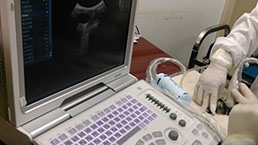 Small Animal Ultrasound Imaging Experiment Service
Small Animal Ultrasound Imaging Experiment Service
-
 Transmission Electron Microscopy (TEM) Experiment Service
Transmission Electron Microscopy (TEM) Experiment Service
-
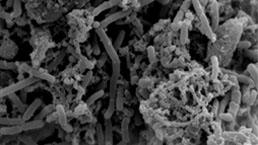 Scanning Electron Microscope (SEM) Experiment Service
Scanning Electron Microscope (SEM) Experiment Service
-
 Learning and Memory Behavioral Experiment Service
Learning and Memory Behavioral Experiment Service
-
 Anxiety and Depression Behavioral Experiment Service
Anxiety and Depression Behavioral Experiment Service
-
 Drug Addiction Behavioral Experiment Service
Drug Addiction Behavioral Experiment Service
-
 Pain Behavioral Experiment Service
Pain Behavioral Experiment Service
-
 Neuropsychiatric Disorder Behavioral Experiment Service
Neuropsychiatric Disorder Behavioral Experiment Service
-
 Fatigue Behavioral Experiment Service
Fatigue Behavioral Experiment Service
-
 Nitric Oxide Assay Kit (A012)
Nitric Oxide Assay Kit (A012)
-
 Nitric Oxide Assay Kit (A013-2)
Nitric Oxide Assay Kit (A013-2)
-
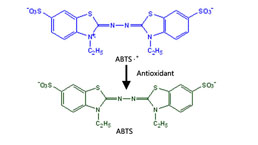 Total Anti-Oxidative Capability Assay Kit(A015-2)
Total Anti-Oxidative Capability Assay Kit(A015-2)
-
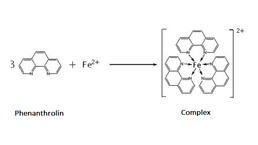 Total Anti-Oxidative Capability Assay Kit (A015-1)
Total Anti-Oxidative Capability Assay Kit (A015-1)
-
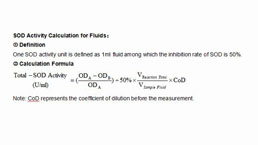 Superoxide Dismutase Assay Kit
Superoxide Dismutase Assay Kit
-
 Fructose Assay Kit (A085)
Fructose Assay Kit (A085)
-
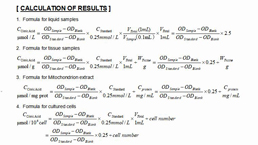 Citric Acid Assay Kit (A128 )
Citric Acid Assay Kit (A128 )
-
 Catalase Assay Kit
Catalase Assay Kit
-
 Malondialdehyde Assay Kit
Malondialdehyde Assay Kit
-
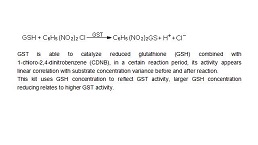 Glutathione S-Transferase Assay Kit
Glutathione S-Transferase Assay Kit
-
 Microscale Reduced Glutathione assay kit
Microscale Reduced Glutathione assay kit
-
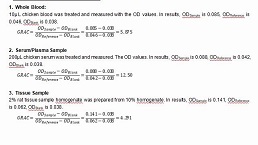 Glutathione Reductase Activity Coefficient Assay Kit
Glutathione Reductase Activity Coefficient Assay Kit
-
 Angiotensin Converting Enzyme Kit
Angiotensin Converting Enzyme Kit
-
 Glutathione Peroxidase (GSH-PX) Assay Kit
Glutathione Peroxidase (GSH-PX) Assay Kit
-
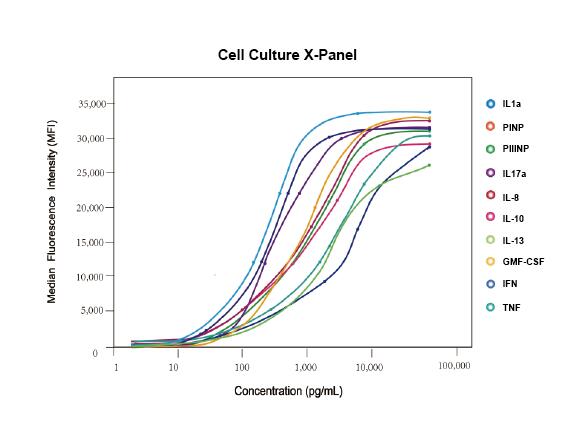 Cloud-Clone Multiplex assay kits
Cloud-Clone Multiplex assay kits
| Catalog No. | Related products for research use of Rattus norvegicus (Rat) Organism species | Applications (RESEARCH USE ONLY!) |
| DSI730Ra01 | Rat Model for Necrotizing Enterocolitis (NEC) | Disease Model |
| TSI730Ra17 | Rat Small Intestine Tissue of Necrotizing Enterocolitis (NEC) | Paraffin slides for pathologic research: IHC,IF and HE,Masson and other stainings |






